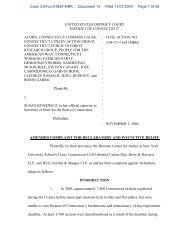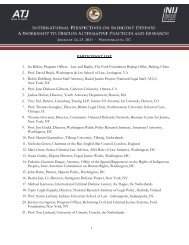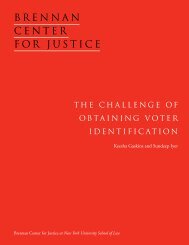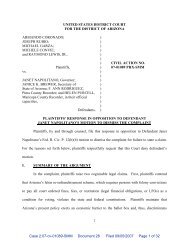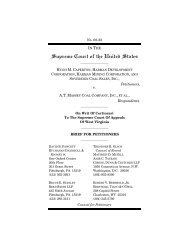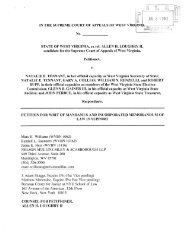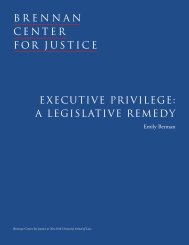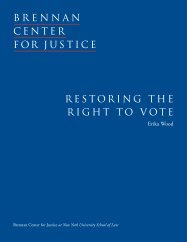THE NEW YORK STATE LEGISLATIVE PROCESS: AN ...
THE NEW YORK STATE LEGISLATIVE PROCESS: AN ...
THE NEW YORK STATE LEGISLATIVE PROCESS: AN ...
Create successful ePaper yourself
Turn your PDF publications into a flip-book with our unique Google optimized e-Paper software.
48 <strong>THE</strong> <strong>NEW</strong> <strong>YORK</strong> <strong>STATE</strong> <strong>LEGISLATIVE</strong> <strong>PROCESS</strong>: <strong>AN</strong> EVALUATION <strong>AN</strong>D BLUEPRINT FOR REFORM<br />
campaign committee shortly after the law was passed. The current system<br />
facilitated the law’s passage without any review, debate, or public discussion<br />
of either its merits or its shortcomings. 260<br />
■ Brownfields Legislation. Environmentalists and urban renewal advocates<br />
have long fought for legislation to cleanup “brownfields,” abandoned industrial<br />
properties that have been environmentally contaminated. Such properties<br />
cannot attract development because of concern over liability for cleanup<br />
and potential injuries, and often lead to urban blight and decay as a result.<br />
Legislation to provide incentives and standards to clean up over 800 abandoned<br />
industrial sites across the state was stalled for over a decade in the<br />
Legislature, and was referred to as “one of the most blatant examples of<br />
Albany dysfunction.” 261 Despite widespread support for legislation, the New<br />
York State Legislature could not reconcile persistent policy differences<br />
between the Senate and Assembly because there was no conference committee<br />
system in place to do so. 262 In June 2003, the Speaker, Majority Leader,<br />
and Governor negotiated a bill behind closed doors that was agreeable to all<br />
three. The Assembly finally passed the bill without debate and through the<br />
use of a message of necessity that deprived members of any opportunity to<br />
review its complex provisions. The Senate, however, actually passed the<br />
wrong version of the bill as a result of such haste, and the session ended<br />
without a law. Three months later, the Senate convened for a special one-day<br />
session and passed the correct bill by a vote of 51-9. In short, the current<br />
system not only deprived New Yorkers of a much-needed law to improve the<br />
flagging economy and clean up dangerous sites, but also facilitated passage of<br />
the wrong bill without any senators or staff noticing the error. One can only<br />
imagine the errors that such inadequate review is likely to produce in laws<br />
that have a lower public profile than the brownfields legislation. 263<br />
■ Rent Control. After rent control was extended and modified in a law passed<br />
and signed in 1997, tenants’ rights groups discovered an error in its language<br />
which caused the law to conflict with the stated agreement reached between<br />
the Governor and the two legislative leaders and to injure tenants significantly.<br />
Ironically, the provision had been drafted by Speaker Silver’s staff<br />
during closed-door negotiations with the Majority Leader and the Governor.<br />
But because the legislative process in Albany precluded any of the tenants’<br />
advocates – or any rank-and-file legislators for that matter – from seeing the<br />
actual legislation before it was passed, the error was not caught until it was<br />
too late. 264<br />
■ Repeal of the New York City Commuter Tax. In May of 1999, the Speaker<br />
used a message of necessity to rush through the Assembly a bill to repeal New<br />
York City’s commuter tax on suburban residents who commute into the City.<br />
Published reports suggested that the Speaker did so, even though he represented<br />
Lower Manhattan, in an (ultimately unsuccessful) attempt to help a<br />
Democratic State Senate candidate in Rockland County, who was locked in



